Your cart is currently empty!
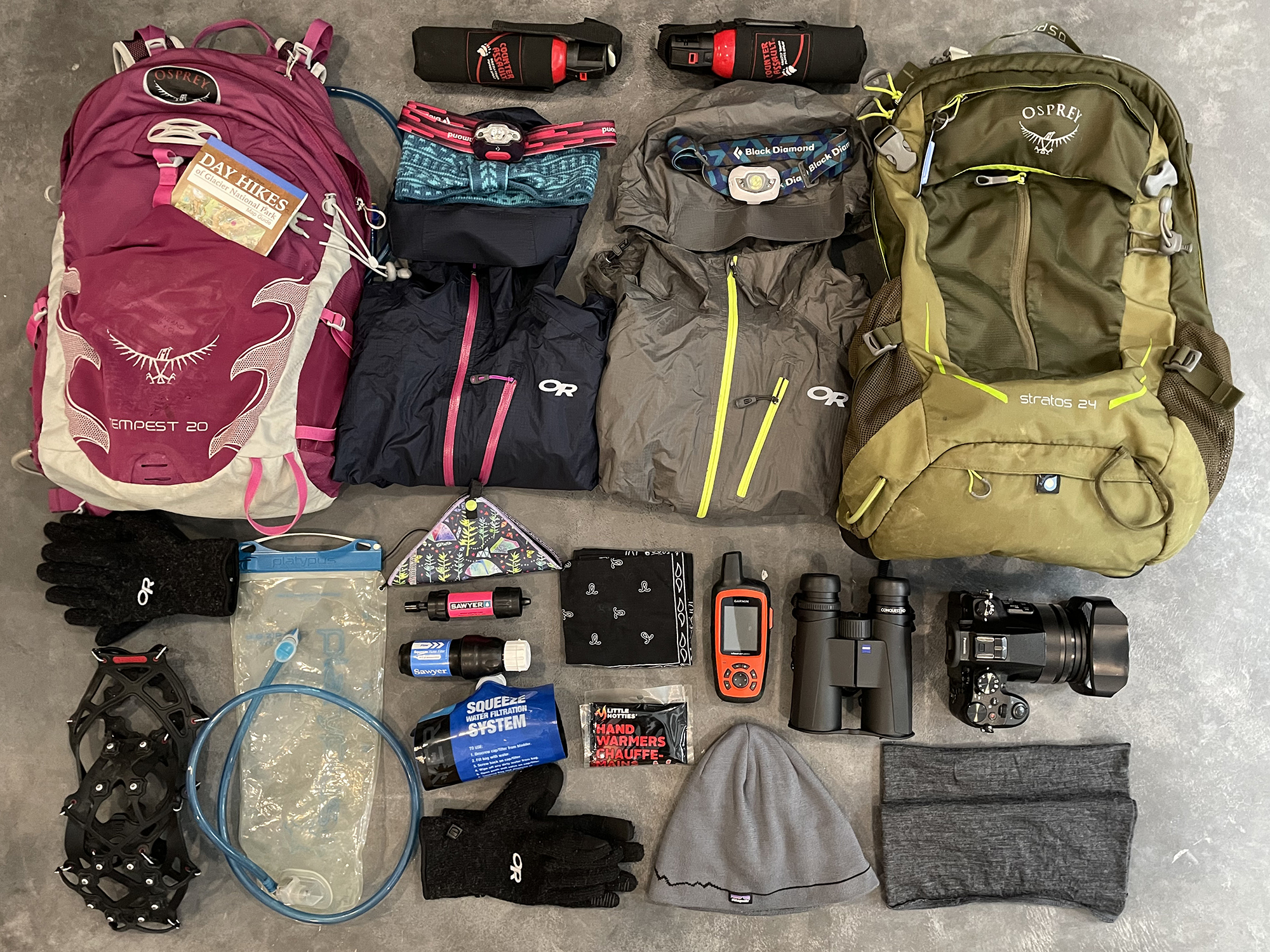
What’s in our Day Hiking Backpacks
—
by
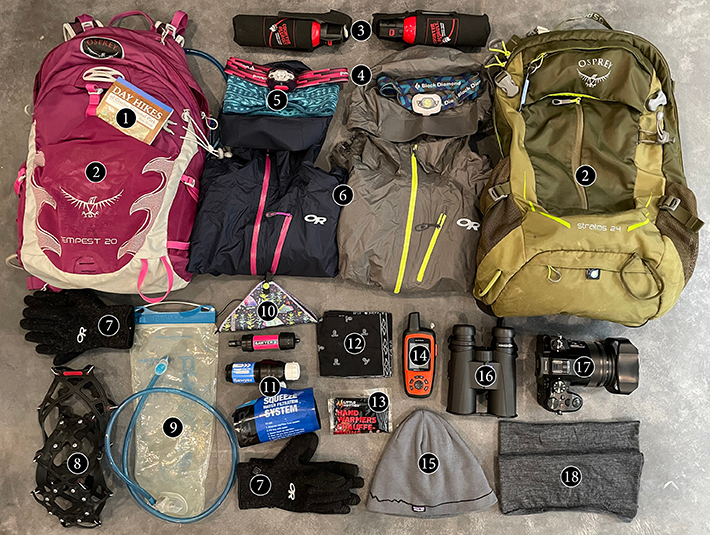
When I first got interested in hiking and backpacking after moving back to Montana, I opened up Backpacker Magazine and started creating a list of items I needed to purchase to explore the great outdoors. Unfortunately, I ended up with boots that gave me blisters and hurt my feet, a tent that was too heavy, and a collection of gear that I don’t use today.
After logging thousands of miles on the trail, Kristen and I are happy with our current backpack and gear setups — These are items that we ACTUALLY go out and use, not just test for a few weekends to write up a quick review, but essential gear that we grab time and again. Of course this list is always evolving, but it’s what we’ll be hitting the trail with this year.
Couple of quick notes and caveats here. First, we don’t replace or buy new gear each year unless it’s broken/no longer works/or just doesn’t meet our requirements, is poorly made, or the new version is exponentially better. So some of the items above (I’m looking at you platypus hydration bladders) are awesome and have lasted for many years, but the new models are a bit different as companies are always trying to iterate and improve their products.
The other caveat is we aren’t sponsored by any companies, so we’re not paid by any brand or company to have an opinion. We do however have links to products we recommend and will get a commission if you purchase via that link. While that may seem like a subtle difference, they are worlds apart. Basically we get paid to have OUR opinions, instead of getting paid by a company to have a particular opinion about a product… and we will ONLY recommend a product if it’s something we actually use, enjoy, or find valuable.
Our Gear List:
- Topographic Map – Hike 734 Day Hike Map Guide – Yup, we always take this with us when hiking in and around the national parks. Apps are fun, but we like having a physical product that doesn’t require batteries or a nearby cell tower. “Paper” maps also give you a broader sense of place that scrolling around on a small screen can’t match.
- Backpack – Osprey makes great packs, and we’ve throughly used and abused these day packs for several years. They’re comfortable, the perfect size to fit everything we need for the day, plus have enough structure to attach extras like cameras and binoculars (see below for more info).
- Bear Spray – Counter Assault – When hiking in bear country, you must carry bear spray. Buy a canister if you regularly hike in Glacier or Yellowstone. If you are traveling (obviously you can’t take it with you on the plane) and will only need it for a few days, there are options to rent a canister. Also, know how to use it! (Here’s a short video of us practicing with expired cans.)
- Headlamp- Black Diamond Headlamp – We’ve had these (unsure of what model) for years and they work great. Just make sure to get one with a bright light (for hiking in the dark) and a battery saver light (great when doing stuff around camp at night). There’s no need to get a monster one; simple, smaller headlamps like the “Storm” are great!
- Ear Warmer/Headband- Pistil – With various thickness and material options, these are a great way to keep flyaway hairs out of your face and/or your ears warms on a breezy ridge or mountain top… and look cute while doing it!
- Rain Jacket- Outdoor Research Helium (for her) – Super lightweight and compacts really small. Also doubles as a windbreaker.
- Gloves- Outdoor Research Wool Gloves– It’s important to prepare for extreme weather conditions no matter where you plan to hike and regardless of the weather forecast. Weather conditions can change quickly and unexpectedly. Wool gloves will keep your hands warm even when wet.
- Footwear Traction- Kahtoola EXOspikes – These microspikes perform amazing on snow and ice covered trails. They roll up fairly compact into their included storage bag.
- Hydration Bladder- Platypus Big Zip – With regular cleanings these bladders have been holding strong for us for several years (pushing a decade) without any issue of leakage or material degradation. We also love these because they never have any off-putting, plastic taste which we’ve found with many other brands.
- Kula Cloth – A reusable antimicrobial pee cloth (learn more about it in this blog).
- Water Filtration System- Sawyer Squeeze or Sawyer Mini – This super lightweight filtration system works by filling up a bag or water bottle, then squeezing water through the hollow fiber filter. The “Squeeze” is a bit bigger and has a little higher flow rate, whereas the “Mini” is smaller and lighter. We have both and use them to fill our water bladders while on the trail. Long distance hikers will often be seen with a Sawyer Squeeze connected to a SmartWater bottle and drink directly from the flip-top sports cap.
- Handkerchief – A simple piece of gear that can serve a multitude of functions (wiping off mud/dirt/sweat, drying feet after a creek crossing, etc)!
- Hand Warmers- Grabber Hand Warmers – These get nice and toasty and last a long time. We like them better than other name brands that we’ve tried.
- GPS- Garmin inReach Explorer+ – This GPS unit allows for two-way communication so you can text back-and-forth with someone back home (albeit slowly) to let them know you need some help, are running late, or simply “Good night!”. It pairs with your smartphone, so you can use your phone to do the texting and even looking at the maps. The GPS also offers tracking, routes, waypoints, and a nice basemap. If you don’t need all of the built in mapping features, the Garmin InReach Mini is a great option.
- Wool or Fleece Beanie – Never head out without a warm hat when going into the mountains (see #7 Gloves above). Find one you love that covers your ears, and you’ll thank me when a freak snowstorm with a stiff wind pops up out of nowhere in August!
- Binoculars – I’ve used both the Zeiss Terra ED 8×42 and now the Zeiss Conquest 8×42 binoculars and love them not only for their clarity and brightness, but Zeiss is amazing when it comes to repair (even when I was at fault for breaking them). I find that the 8 x42 is the sweet spot for magnification, brightness, size, and weight for use on the trail. (Read #19 below to find out how I attach them to my backpack.)
- Camera – I’ve been using the Panasonic LUMIX FZ2500 for years now (before that the FZ1000) and think it’s a great all around camera for hiking/backpacking. It has a long zoom at 480mm and good wide angle. It also takes great video. It’s certainly not the best camera, but it’s light enough to haul around, so I’m taking it with me and getting way better footage than I’d get if I was only using an iPhone. I’d also recommend the more expensive Sony rx10 mark IV which is a better overall camera with the same weight. It zooms in to 600mm with a faster focus, but it is almost double the price of the Panasonic. (Read #19 below to find out how I carry it on my backpack.)
- Multifunctional Neck Gaiter- Buff makes a great neck gaiter that we’ve been using for years. We particularly like the Merino wool material. Along with gloves and warm hats, these buffs are a staple in our packs, and we’ve been known to pull them up over our noses when the weather turned wicked sour.
- Camera/binocular straps (in photos below) – While there are a lot of ways to carry around your camera and binoculars, such as special clips and harnesses, I’ve yet to find a system that works better than clipping them directly to my load lifter straps. I’ve found a collection of attachment pieces from OP/Tech USA (American made and produced in Livingston, Montana!). Starting from the top, the Reporter/Backpack Connector clips to my load lifter straps and then my camera bag. This puts my camera right in front of me at all times for when that moose steps out onto the trail. It also allows for quick disconnect to remove the camera bag when it’s time to take off my pack. For my binoculars, I bought the Utility Strap which allows me to have a traditional binocular strap when I want it. When I want to take my binos hiking, I can remove the strap and, with an extra Uni-loop System Connector that I attached to my camera bag, I can clip my binoculars right below my camera bag. (As a bonus, I can leave the camera at home and just attach the binoculars to the Reporter/Backpack Connector if I so please.)
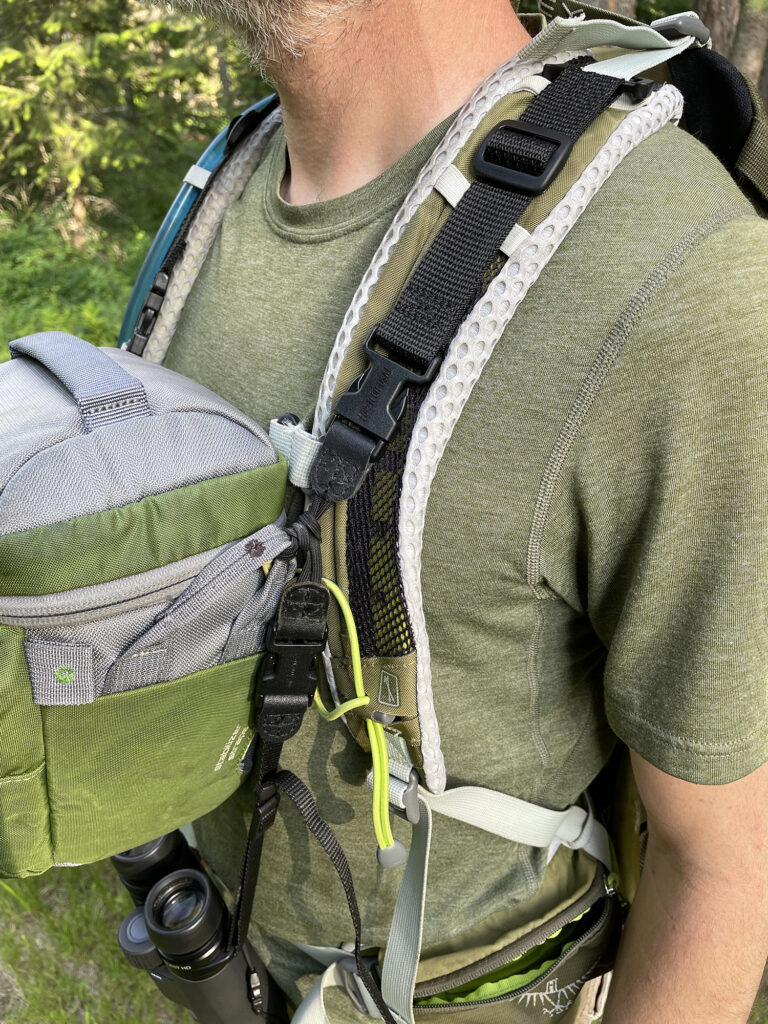
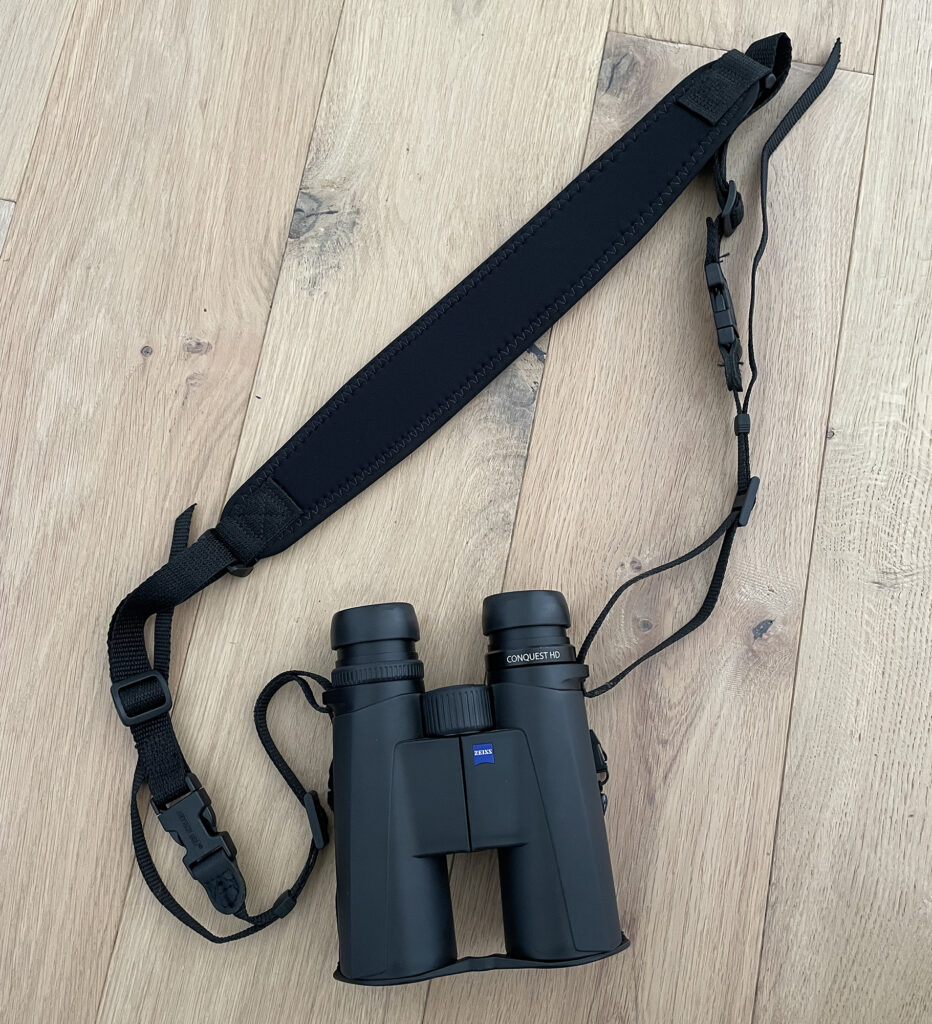
Comments
6 responses to “What’s in our Day Hiking Backpacks”
-
Thanks Jake this is very helpful information.
I also have the Osprey Stratos 24 and really like how comfortable it is on long day hikes.
I’m curious what footwear you prefer to use?
I have been using Altra Lone Peaks for past several years and like everything about them except the traction is not as good as I would prefer on steep terrain or anything with scree.-
I’ve pretty much been exclusively Salomon for years now. I dabbled in some Hokas, but found that they didn’t give me the control I wanted and I would slide in them a bit when doing some sidehilling. The Salomon’s have incredible traction with their ContaGrip soles. My wife has the Altra’s and has the same complaint. All that being said, a good fit trumps some traction. If Kristen tries on Salomon’s her feet hurt, so grip or no grip, it’s a no go.
-
-
Thanks Jake – very helpful. We have many of the same items, Osprey Stratos 24, Zeiss binoc’s, InReach, headlamps, etc. I have a camera mount that fits on my front strap, love it. Just purchased a Osprey Talon 11 for those 2-3 mile hikes on travel days.
-
I’ve seen the clips and am not convinced yet. I like having the protection for my camera. Which one do you have?
I have a couple smaller packs, but end up carrying the same stuff for shorter hikes as well and end up not wanting to switch out all of my stuff to the smaller pack… so basically laziness. 😀
I do have a running pack that I’ll use every once in awhile, but that ends up being mainly for trail running and not really for hiking short hikes.
-
I have used a Peak Design camera clip for about 3 years. It’s mounted to my Nikon D5000 camera, and clips to my left backpack shoulder strap. It’s very well made and makes use of the camera very convenient.
-
-
-
Thank You Jake! What kind of camera bag can you recommend?
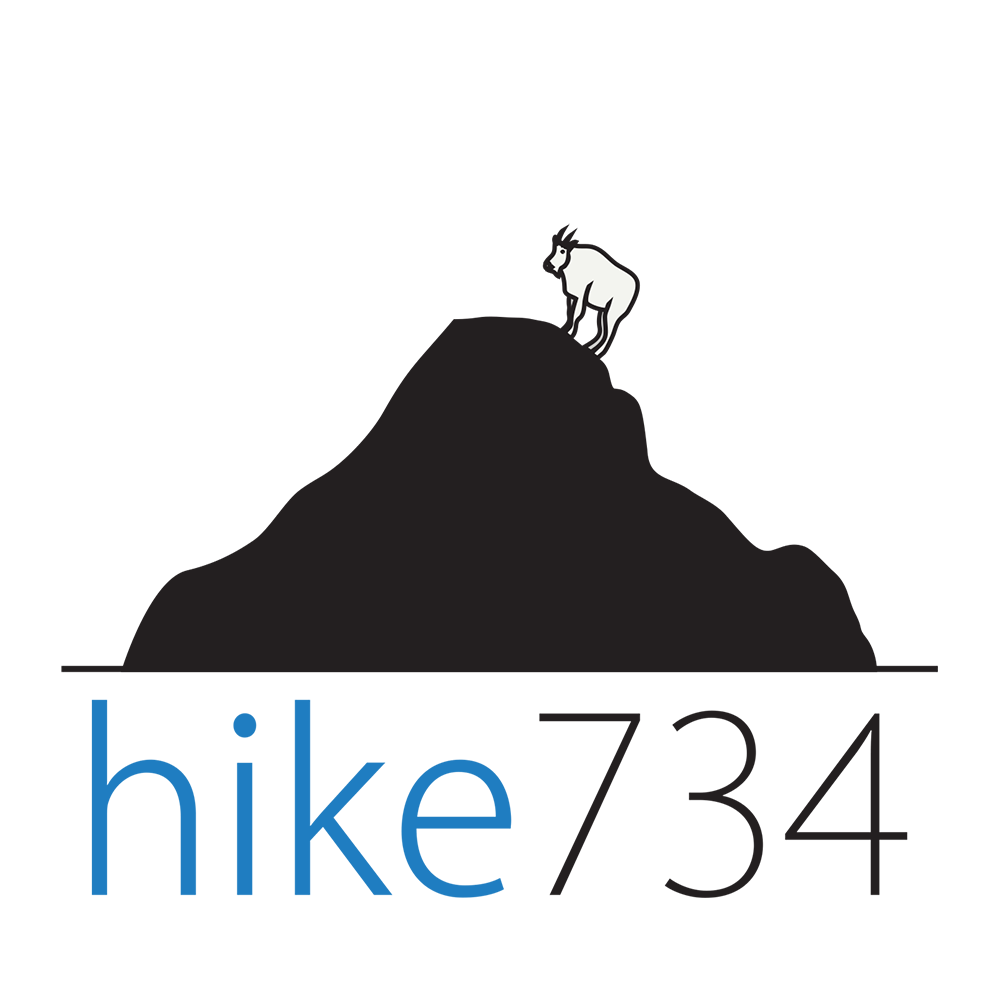

Leave a Reply